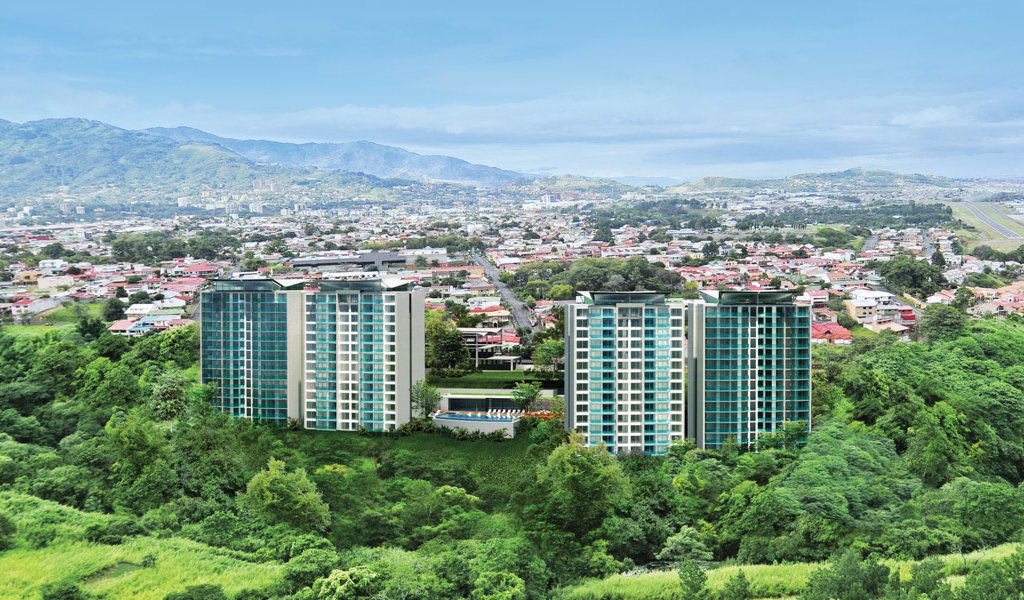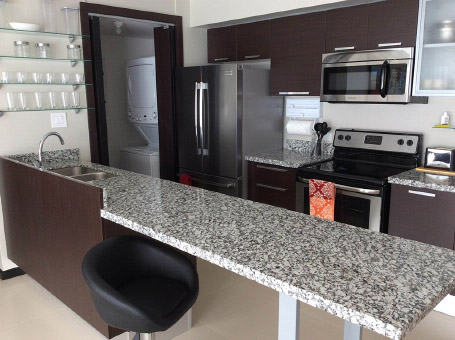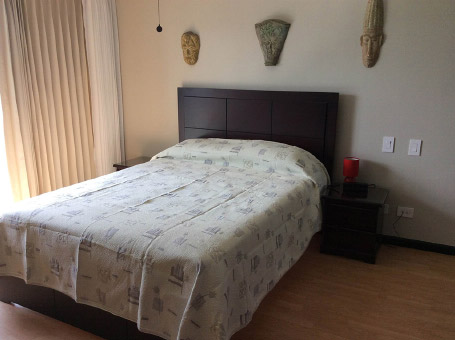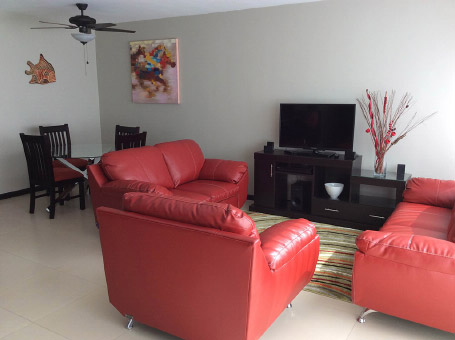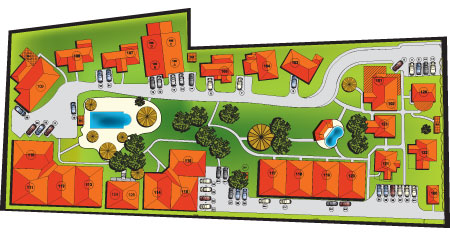COMMENTS
1. Domestic Airport Improvements: I didn't know this was happening. If true, I am sure it well help tourism... however, domestic air travel is now really fractured and I have not seen the stats re. domestic air passenger traffic... the bad publicity surrounding the crashes of Nature Air has, I believe taken a toll. SANSA still flies and a few no names as well.
2/4. Protests: These article chronicle the actions and the implications of those actions... especially article #4...
3. Income Tax Implications: And here you have a capsule of some of the tax changes.
1. Government announces advances in local airports improvements
By the A.M. Costa Rica staff
The Directorate General of Aviation announced that improvements at local and international airports are on schedule. According to the information provided by the Directorate, the total investment in these airports is $46,175,418.
"Costa Rica is capable of having quality airport services. Therefore, we are focused on investing in the improvement of infrastructure and security. In addition, we strengthen efficient, transparent, responsible and timely management," said Guillermo Hoppe, General Directorate of Aviation. "These changes are fundamental if we want to reactivate the local economy. Providing excellent conditions is part of the strategy of the tourism industry and that is why we must focus on the rewarding experience we can offer the user."
According to the Directorate, the investments and latest advances in airports are as follow:
-Palmar Sur Airport*, in the province of Puntarenas, the remodeling is 95 percent complete at an investment about $1,910,307. It includes reconstruction of the airstrip, remodeling and expansion of the airport, a parking area, improvement of the security strips, horizontal demarcation and lighting of the runway.
-Golfito Airport* in the southern area of the province of Puntarenas the remodeling is 95 percent complete an investment about $1,835,230 for remodeling the airport airstrip and the main building.
-Pérez Zeledón Airport* in the south of San José, the remodeling is 95 percent complete of investment about $375,387 in the construction of a new airport module and expansion of the aircraft parking platform.
Others airports with improving infrastructure works are:
-Guápiles Airport* in the province of Limón received an investment about $2,501,625, for the reconstruction of the airstrip, improvement of security strips, horizontal demarcation, construction of a terminal module, repair in perimeter fence and repair of pipes. The work is 25 percent complete.
-La Managua airport in Quepos*, in the province of Puntarenas, will receive an investment about $8,997,511. The entire building will be repaired, there will be a platform for parking, an extension in the runway, improvements in security strips, track lighting, and a perimeter fence.
In the case of the airport in Quepos, as A.M. Costa Rica reported, the airport has been closed since December 2017. In January 2018, the General Direction of Aviation canceled the contract with the company that was doing the remodeling, because it was not able to comply with the work specifications. It was announced that after the renovations are made, it will be reopened.
-Drake Bay Airport*, in the Osa Peninsula, will have an investment of $5,672,529, for improvement of the runway, the main building was modernized, a station platform for three aircraft, repairs to the security strips and the perimeter fence was built.
-Upala Airport* in the Alajuela province received an investment of $2,001,300 for expanding the runway, repairing the perimeter fence and repairing pipes. It is estimated that it will be repaired in 2020.
-Tortuguero Airport* in the province of Limón received an investment of $2,501,625, for the expansion of the parking platform for three Bravo-type aircraft, new air terminal building and a module for Ministry of Security officials. This airport should be completed in 2021.
-Oduber International Airport* in the province of Guanacaste received an investment of $1,450,942, for improving the airstrip and remodeling the perimeter fence.
-International Airport of Limón* received an investment of $2,918,562. A new terminal will be built inspired by Caribbean architecture, which will have waiting rooms, government offices, passenger flow division, fire protection system, wastewater treatment. This project is in the design stage. It is estimated that it will be repaired in 2020.
-Tobías Bolaños International Airport*, in Pavas, in the province of San José, received an investment of $16,010,400, in the construction of the new terminal building, new potable water network, treatment plant wastewater, new electricity network, improvements in parking. It is expected that these improvements will be completed in 2020.
The General Directorate of Civil Aviation was created by law on 26 October 1949. It is the civil aviation authority of Costa Rica and oversees all aspects of civil aviation operations and infrastructure within the country.
2. Protests continue to shut down Costa Rican highways, streets
Take extra precaution when driving this weekend in Costa Rica, where protesters throughout the country have caused traffic jams and blockages of major highways.
Over the last several days, truckers have demonstrated tortuguismo — intentional slowdowns — to object to a new value-added tax, which will go into effect July 1. At the same time, high-school students blocked streets on Thursday and Friday in protest of Education Ministry policies.
The Public Security Ministry on Saturday confirmed long backups on Route 32, the highway which connects San José and Limón. Tortuguismo was reported in Siquirres, Guácimo and Guapiles.
On Saturday morning, a Route 2 bridge in San Isidro de El General remained closed as well.
The Costa Rican government, including President Carlos Alvarado, met with truckers and with students on Friday to discuss their concerns.
Videos shared on social media Friday appeared to show student protesters damaging vehicles when drivers attempted to breach their roadblocks.
Costa Rica’s Chamber of Exporters (CADEXCO) estimated blockades impacting shipping exports through the Moín port in Limón could cause losses totaling $12 million.
Proceed with additional patience — and with caution — if driving. Road conditions can change rapidly, and we recommend using the free navigation app Waze (iOS link; Google Play link) to evaluate hazards on your route.
2.1. Albino Vargas announces street demonstrations against cost containment in public salaries and regulation of strikes
After the various protests this week, the ANEP trade unionist, Albino Vargas, announced street protests against the public employment reform and against the project that will prevent abuses in the strikes.
Vargas said that, this Saturday, he held an emergency meeting of the assembly of leaders of representative base of the sectionals of the National Association of Public Employees (ANEP).
"No to the project to public employment, not anti-strike laws, not to the banning of unions, in defense of the electric model of the ICE (Costa Rican Electricity Institute), for the cancellation of debts to farmers, to return the Infocoop to the cooperative movement; by the fishermen, by the rights of the transporters, of the people in general, that the Minister of Education (Édgar Mora) is gone, "Vargas said.
The president of the ANEP added that the foundations of the organization are ready to go out in the next hours as soon as they agree with other union and social organizations.
"In the next few hours we will be called with other organizations to demonstrate in the streets of this country. We congratulate all the young people of secondary school, the Student Movement of Secondary (Medse) for its great historical struggle. We congratulate the trailers of the ANEP section; we congratulate the police forces that took to the streets this week, the striking educators, the farmers, the fishermen, the cooperative movement, "the union leader said in a video.
The reform to public employment what it proposes is a single salary system for future public employees, that is, one in which salaries are competitive on their own and lack the incentives that today cause an exponential growth in public spending with Over time.
With this measure, the State could save up to ¢ 268,000 million annually.
On the other hand, the strikes project of the liberationist Carlos Ricardo Benavides would allow, for example, to reduce salaries retroactively to officials who participate in movements that are declared illegal.
In addition, it would restrict the possibility of strikes in essential services and punish unions that block roads or sabotage public services.
Albino Vargas contracted "all other social sectors that we are putting ourselves in a great patriotic civic force against the neoliberal policies and supporting the management of the multsectorial social meeting that will soon take to the streets".
Vargas was involved in the student demonstrations that blocked roads this week, prompted by a disinformation campaign on social networks.
A video recorded this Friday shows the unionist Albino Vargas giving instructions to the students in protest about the position they had to maintain after meeting with the President of the Republic, Carlos Alvarado, in the Presidential House.
In the clip, Vargas is seen and heard telling the students that, if Minister of Education, Edgar Mora, is not removed, they should refuse to talk.
At least nine students were hit by vehicles during the day of protests, led mainly by schoolboys and fueled by union and political sectors.
The Red Cross confirmed six incidents distributed in: Nicoya, Guanacaste; Santo Domingo de Heredia, San Miguel de Santo Domingo de Heredia, Heredia center, Cartago (on the way to Turrialba) and Chachagua, in San Ramón. In each of these sites a patient was reported by location.
3. Everything you need to know about the income tax (in 5 minutes)
Big changes in taxes on salaries, changes in taxes when selling or renting a house, and a new fiscal period that will initially be 15 months.
This July 1 represents a great change in the lives of Costa Ricans at all levels. The tax reform of the Public Finance Strengthening Law comes into force, and with it one of its main components: the reform to the income tax.
In this Explainer we summarize the most important thing to know about this reform, thanks to information from the economic team of La Nación and El Financiero.
What happens after July 2019?
Significant reforms to the tax on income enter. Below we explain three of the most important changes.
Before knowing these changes, it is important to know that the tax reform is one of the solutions proposed by the Government before the severe fiscal deficit suffered by Costa Rica, which means that the Costa Rican state spends more money than it receives. With this reform it is sought that the State perceive much more money and level the balance of expenses-income in the medium term (it will take a while to feel the relief, according to experts).
Change of rules in the chapter on income and capital gains or losses
First we understand the terms.
Capital gain: it is obtained when an asset is sold at a higher price than the one purchased. It can be when selling a farm, a house, stocks or bonds.
Loss of capital: if the sale price is less than the acquisition price.
Capital income : profit obtained from a property, which can be a property (for example a house for rent) or a piece of furniture (for example, the interest of a term deposit).
With the reform, practically all capital gains and rents have a tax of 15%. In some cases the tax will be applied gradually.
According to the Treasury, this tax has almost all countries and Costa Rica was an exception.
Let's see more in detail with the example of selling a house
Before July, if the sale of a house did not come from the usual activity of a taxpayer, the transaction was not taxed in Costa Rica. Now the tax will be applied if it is about the sale of a different house to the one that is inhabited. If you sell the house in which you live, the capital gain obtained is exempt from tax.
But let's say that you sell a different house: the law establishes a 15% tax on capital gains (difference in purchase price and sale price).
Ojito: if it is the first sale after July 1, the Treasury opened the possibility of choosing if instead of 15% on capital gains, you pay 2.25% on the value of the sale.
To apply 15% on the gain (difference between acquisition value and sale value), you have to check with the Treasury the acquisition value. This may be difficult for some people, and that is why there is the option to pay a 2.25% tax on the value of the sale.
Let's see an example with the rental of a house
With the reform, owners of rental goods that have at least one employee insured in the CCSS, may choose between paying with the traditional rent regime, or with the new one.
Those who do not have an employee must comply with the new regime of tax reform.
Traditional regime: income is added and expenses are subtracted. Tax is paid on the difference based on the tables published by the General Taxation Office every fiscal period.
Requirements: have at least one employee
Annual statement
Liquidation: annual
Income tax return: yes you must submit
Informative statement: yes you must submit
New regime: 15% of income is subtracted for recognition of expenses, and the remaining 85% is paid 15% tax.
Requirement: if you do not have an employee, you must choose this system
Declaration: monthly
Settlement: monthly
Income statement: does not file because you must not show expenses
Informative statement: does not present
This measure has been criticized, because those who have employees linked to the properties they rent are usually companies and corporations. They can choose the tax payment system that suits them best, while small landlords who do not have employees will have to pay taxes as required by the tax reform as of July 2019.
On the other hand, the interest of a term deposit certificate is taxed at 15% instead of 8%.
The income tax on the returns of investment certificates and government bonds will go from 8% to 15%. But the investments that were made before the Law's validity will continue to have the current tax treatment until its expiration.
Change of fiscal period
With the reform, the fiscal period becomes from January 1 to December 31. This ends a fiscal period that Costa Rica had for decades that was linked to coffee harvests (by the way, did you know that coffee was discovered thanks to dancing goats? )
To make the transition, there will be a fiscal period of 15 months that will begin on October 1 and end on December 31, 2020.
Change in taxes on salary
The reform created new sections of the salary tax. These will be applied to all salaries between July 1 and September 30, 2019.
Thus, the sections on tax to salary according to the decree published by the Treasury in June 2019. These will apply between July 1 and September 30, 2019. For the 15 months between October 2019 and December 2020, the Treasury will publish another table. . The Treasury does this to adapt to the change in the fiscal period.
Salary between ¢ 1 and ¢ 817,000: exempt from income tax
Example: if you earn ¢ 600,000 a month (or ¢ 816,999), you do not pay income tax.
First taxed excess - Salary between ¢ 817,000 and ¢ 1,199,000: pays 10% of income tax on surplus.
Example: if you earn ¢ 1,000,000 a month , you will pay 10% on the excess of ¢ 817,000, that is, 10% of ¢ 183,000. This equals ¢ 18,300 tax .
Second taxed excess - Salary between ¢ 1,199,000 and ¢ 2,103,000: pays 15% of income tax on the surplus + 10% of income tax for the excess between ¢ 817,000 and ¢ 1,199,000.
Example: if you earn ¢ 2,000,000 a month , you will pay 15% on the surplus of ¢ 1,199,000, that is, 15% of ¢ 801,000. This equals ¢ 120,150 of tax.
Also, you have to pay 10% tax on the first excess. That is, 10% of ¢ 382,000, equivalent to ¢ 38,200 of tax.
In total you pay ¢ 158,350 of tax .
Third taxed excess - Salary between ¢ 2,103,000 and ¢ 4,205,000: pays 20% of income tax on excess + 15% tax for excess between ¢ 1,199,000 and ¢ 2,103,000 + 10% tax for the excess between ¢ 817,000 and ¢ 1,199,000.
Example: if you earn ¢ 4,000,000 a month , you will pay 20% on the surplus of ¢ 2,103,000, that is, 20% of ¢ 1,897,000. This equals ¢ 379,400 tax.
In addition, you have to pay 15% tax on the second excess. That is, 15% of ¢ 904,000, equivalent to ¢ 135,600 of tax.
Also, you have to pay 10% tax on the first excess. That is, 10% of ¢ 382,000, equivalent to ¢ 38,200 of tax.
In total pagás ¢ 553,200 of tax .
Fourth taxable excess - Salary above ¢ 4,205,000: pays 25% of income tax on surplus + 20% tax for excess between ¢ 2,103,000 and ¢ 4,205,000 + 15% tax for excess between ¢ 1,199,000 and ¢ 2,103,000 + 10% tax for the excess between ¢ 817,000 and ¢ 1,199,000.
Example: if you earn ¢ 6,000,000 a month , you will pay 25% on the surplus of ¢ 4,205,000, that is, 25% of ¢ 1,795,000. This equals ¢ 448,750 tax.
In addition, you have to pay 20% tax on the third excess. That is, 20% of ¢ 2,102,000, equivalent to ¢ 420,400 of tax.
In addition, you have to pay 15% tax on the second excess. That is, 15% of ¢ 904,000, equivalent to ¢ 135,600 of tax.
Also, you have to pay 10% tax on the first excess. That is, 10% of ¢ 382,000, equivalent to ¢ 38,200 of tax.
In total pays ¢ 1,042,950 of tax .
Síp: with the tax reform the taxes on the income for salaries are added by each surplus. Thus, those who earn more money monthly end up paying significantly more money in taxes than other employee
4. Demonstrators prevent passage of 1,000 containers; exporters fear losses of $ 12 million
Merchandise with fruit and vegetables has not been able to enter the new megaport of Moín since yesterday at 8 a.m.
The exporters fear losses of $ 12 million (¢ 7,020 million) for the blockades that remain in different points of the route 32, to Limón, and that have prevented the entry and the respective discharge of 1,030 containers to the new megaport of Moín.
The containers contain agricultural products such as pineapple, banana and tubers, many of these frozen. The merchandise will be lost if it is not unloaded on time.
"The most painful thing is that there are 1,000 dissatisfied customers in the world who will value if Costa Rica is a valid and reliable option to get their merchandise or if they prefer, better, to buy in other countries and not take the risk that the next week they do not have merchandise, "said Laura Bonilla, president of the Chamber of Exporters of Costa Rica (Cadexco).
Since yesterday, Friday, June 28, at 8 am, they have not been able to enter containers at the Moin megaport, confirmed Kenneth Waugh, director of APM Terminals, the container terminal concession company.
"The loading plan includes 22 boats a week. Yesterday (Friday) four were scheduled and today four other ships, in 24-hour shifts. Four have already left with little cargo; the boats are not waiting. Now, for time and planning, even if the blockade were lifted now, about 200 containers will not be able to be loaded, "said Waugh.
At noon this Saturday, the Public Force confirmed the obstruction of roads in five different sectors: Siquirres, Guácimo, Guápiles, Limón 2000 and Liverpool.
The blockades are mainly carried out by trailers, accompanied by students, trade unionists and neighbors.
At the main entrance to Guácimo, for example, a tractor lifted on a platform and two trailers crossed on both lanes of the route are blocked.
Even, the demonstrators placed their own vehicles on the side of the road, to prevent the transit completely.
Light vehicles can take an alternate route from Parismina to Río Jiménez.
However, the protesters check the cars and only let those who move older adults pass by.
The row of heavy cargo vehicles reached the Zurquí Tunnel, confirmed a team from La Nación.
At the main entrance to Guácimo, a tractor lifted on a platform and two trailers crossed in both lanes of the street, prevent the passage towards Moín. Photo: Reiner Montero.
Split carriers
The protests take place despite the fact that, this Friday, representatives of the Sectional Trailer Union ANEP (National Association of Public and Private Employees) met with President Carlos Alvarado, in the Presidential House, and agreed to suspend the blockades that they undertook since Thursday.
Those protesters from the transport sector joined the students who demand the exit of the Minister of Education, Edgar Mora.
In addition to the resignation of Mora, the transporters request the intermediation of the government so that Nicaragua stops charging $ 50 for the entrance of each truck load for that territory.
That charge, they say, leaves them at a disadvantage because the companies do not want to hire Costa Rican trailers, because the collection increases the costs of moving goods.
Also, they ask to be exempt from the payment of 13% of VAT, which, they argue, they have to pay with the entry into force of the tax reform, this July 1.
On the collection of VAT to the service of transporters that transport export products, the Deputy Minister of the Presidency and Social Dialogue, Juan Alfaro, explained that, since this Friday, a norm came into force that allows trailers to be exempt from the payment of that tribute.
Apparently, that meeting in San José warmed up the spirits of the representatives of the transport sector of the Atlantic zone, said E.

